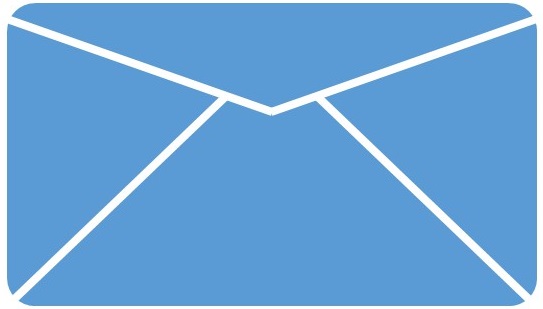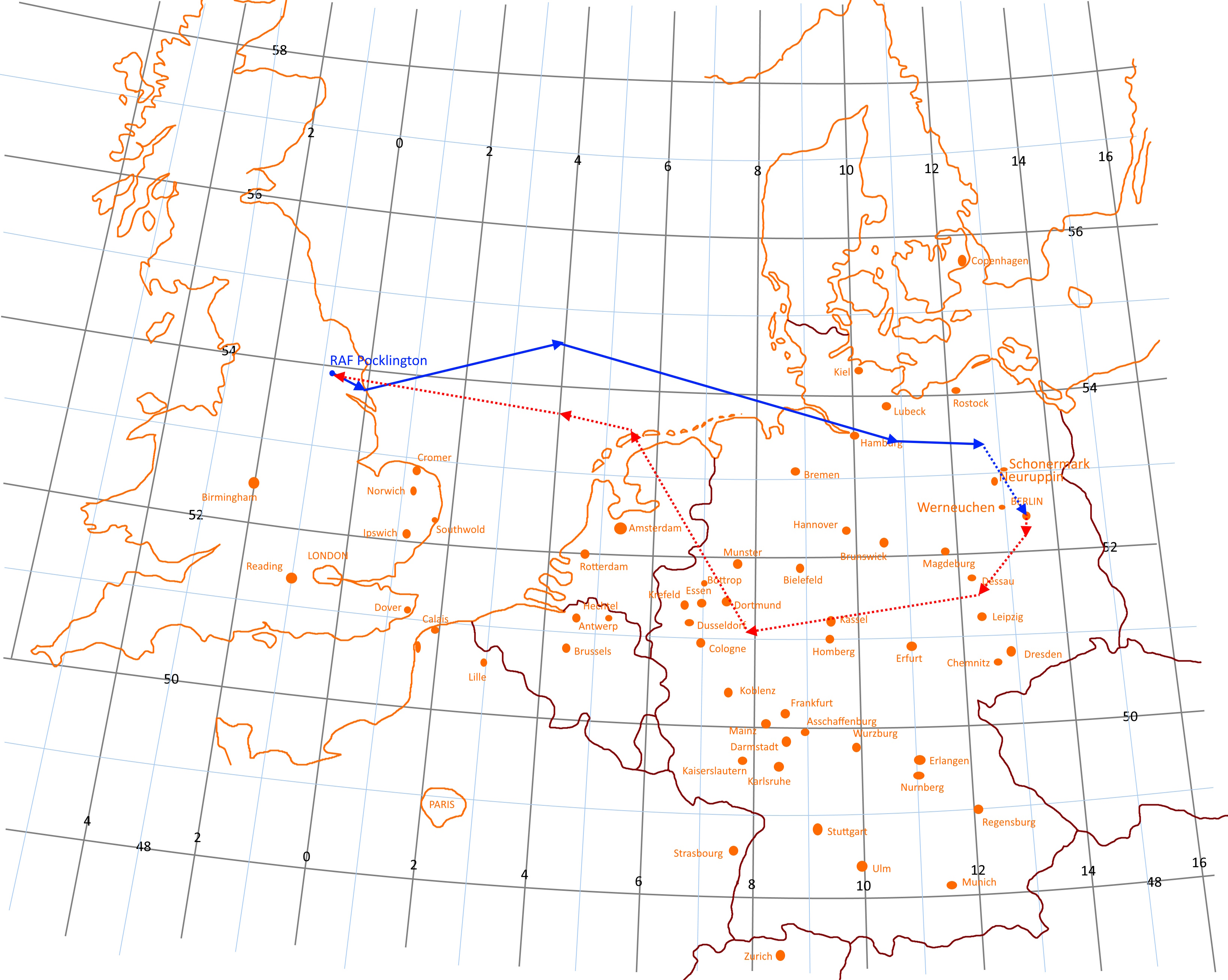THE VILLAGERS OF COLLINGHAM AND LINTON WHO SERVED IN WORLD WAR TWO
COLLINGHAMANDDISTRICTWARARCHIVE.INFO
 CONTACT
CONTACT
Rank
Service Number 488662
Service RAF
Unit
Regiment Woman's Auxiliary Air Force
- Lived in Collingham or Linton immediately prewar or during the war
(Usually taken from 1938 electoral roll or 1939 National Registration roll) - Named as a Voter on the 1945 or 1946 Service List Electoral Roll for Collingham or Linton
- Address in 1939 or 1945/46: 179 Main Street, Collingham
(taken from either the 1939 National Registration or the 1945 and/or 1946 service electoral rolls)
Biography
Ruth Mary Parnaby's name appears on the 1945 Electoral Roll for Collingham on the Service List section, indicating that she was, or had recently been, serving in the armed forces.
Family background
Ruth Mary Parnaby was born on the 8th February 1923 in Knaresborough, the daughter of Thomas Benjamin Parnaby and his wife, Isabel Parnaby (nee Pringle). Between 1925 and 1934 Thomas and Isabel appear on the electoral rolls for West Yorkshire, living at 16a Regent Parade, Harrogate. In the 1933 electoral roll the address given is slightly changed to 16b Regent Parade, but by 1934 the family is back at 16a. By that time there have also been two additions to the register - the addition of Ruth Mary Parnaby and her brother, George R Parnaby. After 1934, we loose track of the family for a few years, and 1934 remains the last record we have of Thomas Benjamin Parnaby. We do not know what happened to him, but we have no record of his death at that time.
Our next records of Ruth Mary Parnaby and her mother, Isabel, are in the 1939 West Yorkshire electoral rolls. Isobel is listed twice, once at High Street, Collingham, marking the start of the Parnaby family connection with Collingham, and the second occurrence, on the National Registration roll, with Ruth, at 179 Belle Vue Road, Leeds. Isabel is described as a housekeeper, while Ruth is described as a laundry worker - towel sorter.
There were no electoral rolls produced during the war, so our next electoral record of Ruth Parnaby is in 1945, when Isabel is on the Collingham electoral roll at High Street, Collingham, while Ruth Mary Parnaby is listed on the Service electoral roll, showing that she was serving in the forces, but giving her home address as 179, Main Street, Collingham.
Service record
The 1945 Service Electoral Roll shows that Ruth was serving in the forces, but gives no indication of her service. However, the name Ruth Mary Parnaby appears on the register of Airmen and Airwomen of the RAF held at The National Archive, so we know that Ruth Mary Parnaby served in the Women's Auxiliary Air Force with the service number 488662. This service number indicates that she joined the WAAF in Gloucester after April 1943. This date would fit well with the change of conscription dates around that time, as Ruth would have been aged 20 in 1943.
Ruth's service record shows that she enrolled in the Women's Auxiliary Air Force (WAAF) on the 29th July 1943 as Aircraft Woman 2nd Class 488662 Ruth Parnaby at RAF Innsworth in Gloucestershire - one of the major first call-up centres for WAAFs. After a few weeks of basic training she was posted to 31 WAAF Recruitment Centre (31 RC) by then based at Wilmslow in Cheshire. Another month later, on the 16th September 1943, Ruth was posted to 216 Maintenance Unit (216 MU) at Sutton Coldfield. On the 11th November 1943 her record show that she was at Redcar. RAF Redcar was, in spring 1943, a centre for administrative training and home to courses for NCO Clerks and General Duties Courses. Ruth's service record shows that her 'trade' in the WAAF was "E.Asst" which probably means Equipment Assistant.
From the 7th February 1944, Ruth was promoted to Aircraft Woman 1st Class and on the 17th February 1944 Ruth was posted to Number 41 Base RAF. This was at RAF Marston Moor, a base that was home to a number of Heavy Conversion Units, where bomber crews were sent to get to grips with the rolls on operational flights in heavy bombers. Ruth later transferred to No. 74 base RAF, but this was a paper exercise as in reality RAF Marston Moor was redesignated from No 41 Base to No. 74 base.
Ruth's service record next contains a mystery: her record shows she was released from the WAAF on the 12th January 1945, but was then recalled to service at RAF Marston Moor on the 12th March 1945. Ruth was later posted from 74 base on the 24th April 1945, before finding herself at No. 87 Maintenance Unit at RAF York on the 29th June 1945.
After the war had ended, Ruth was posted to No. 73 Signals Wing from the 31st October 1945, until on the 17th January 1946, she was posted to 105 Personnel Despatch Centre at Wythall for discharge from the WAAF.
As another aspect of Ruth's life in the war, in 1945 Ruth married John Letch Corrigan, before the war a coal miner from Washington, County Durham, and during the war a flight engineer in the RAF. Given the locations of John and Ruth's births we assume they may have met in the RAF. That leads to the question where they might have met. John was an early enlister in the RAF so it is possible that they met at some airforce base, and the pilot that John flew with, Flight Sergeant Wilding had spent some time at Number 1652 Heavy Conversion Unit which was based at RAF Marston Moor. If his crew were already with him, it could be that John and Ruth met at Marston Moor.
After training John became a Flight Engineer in the RAF, and had joined 102 Squadron, based at RAF Pocklington in November 1943. That month he took part in two night bombing raids. The first, on 18th November, to Ludwigshaven; and the second, the following night to raid Leverkusen. On this second raid, Halifax 'X' flown by F/Sgt R Wilding and containing John Corrigan as Flight Engineer was damaged by flak, and the navigator Sgt L. Cannock was wounded. After a number of days of bad weather, John Corrigan took part in a further two bombing raids in 1943; on the 22nd December to Frankfurt, and on the 29th December to Berlin. On John Corrigan's fifth bombing mission, on the 20th January 1944 to Berlin, his aircraft went missing.
The crew was Flight Sergeant Reginald George Wilding (Pilot), Sergeant Robert Walter Chandler (Navigator), Sergeant Thomas Keith Buxton (Wireless Operator), Flight Sergeant Frank Farrell Yeagar (Air Gunner), Sergeant H Sheppard (Air Gunner), Sergeant J.L. Corrigan (Flight Engineer) and Sergeant John Clifford Heap (Bomb Aimer). They took off in a Halifax Mark II serial number LW227 DY-X from RAF Pocklington at 16.43 hours, and nothing further was heard from them at base.

That night was a disastrous night for 102 Squadron. They lost 7 aircraft out of 16 on this single raid on Berlin, with 16 men killed, 22 taken prisoner of war, and only 13 of the crews of those aircraft returning to base.
There would have been a period of uncertainty for Ruth, not knowing if John had been killed, but eventually news would have come through that John was safe and was prisoner of war. British records state that John's aircraft was shot down by a night fighter and was abandoned by the crew near the German town of Neuruppin. Research by another author available on the web suggests that John's aircraft was shot down at 19.37 hours by Staffelkapitan Oberleutenant Ludwig Meister in a Messerschmidt (Bf) 110 (G-4 3C+HL) flying from Werneuchen, who shot down two aircraft that night. The internet author records that Meister's regular wireless operator recorded the events in his wartime diary:
All of the crew of John's aircaft were lucky and survived and became prisoners of war. John Corrigan was sent to Dulag Luft for processing being there on the 25th January 1944. After that he was sent to Stalag Luft 4B at Mulberg from the 1st February 1944 until his release on the 23rd April 1945.
After the war
After the war, Ruth's mother, Isabel, and brother, George, returned to Main Street, Collingham and Ruth and her new husband, John, also settled in Collingham, first at 1, Elmwood Terrace (1952-1954), then at 63 Brookside (1955 and 1956) before moving to 45, Brookside (1958 to 1961).
John Letch Corrigan died in 1984 and Ruth Mary Corrigan (nee Parnaby) died in 2000.
Biography last updated 17 July 2024 14:25:25.
If you have any photographs or further details about this person we would be pleased to hear from you. Please contact us via: alan.berry@collinghamanddistrictwararchive.info